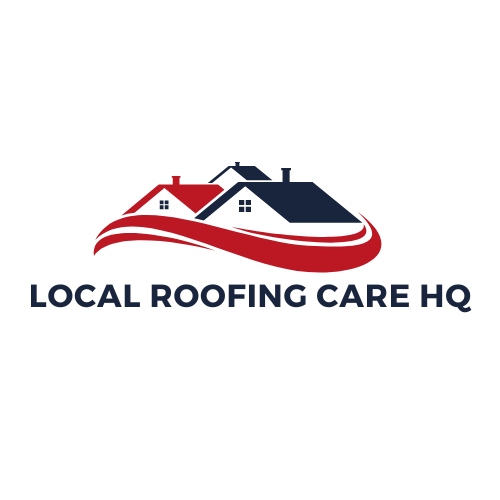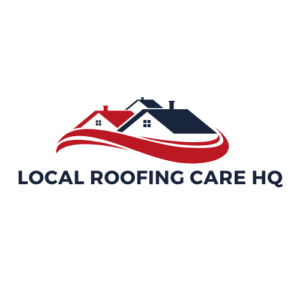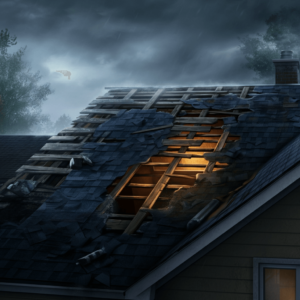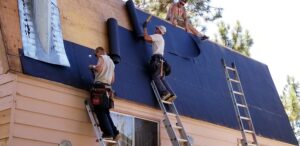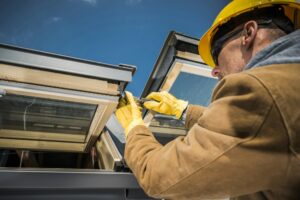Roof repair is an essential aspect of home maintenance that often gets overlooked until it’s too late.
Whether you’re dealing with leaks, missing shingles, or other forms of damage, understanding the types of repairs available and knowing when to act can save you time and money.
This guide will help you identify signs that your roof needs attention, explore DIY options versus hiring professionals, and provide tips on budgeting and preventive measures to keep your roof in top shape.
Discover everything you need to know about maintaining your roof effectively.
- What is Roof Repair?
- Signs That You Need a Roof Repair
- How to Choose a Roof Repair Contractor
- DIY vs Professional Roof Repair
- Costs of Common Roof Repairs
- Preventing Future Roof Damage
- Frequently Asked Questions
- What are some common roof repairs that homeowners may encounter?
- What are some common roof repairs that homeowners may encounter?
- What are some common roof repairs that homeowners may encounter?
- Is it necessary to hire a professional for these repairs or can I DIY?
- How much does it typically cost to repair a roof?
- What should I do if I notice a leak in my roof?
- Can roof repairs be prevented?
- Is it necessary to replace my entire roof if I have a few damaged shingles?
What is Roof Repair?
.jpg_00.jpeg)
Roof repair is an essential service that involves addressing various issues that can compromise the structural integrity and longevity of roofing systems. From leak detection to flashing repair, roof repairs are crucial for maintaining your home’s safety and aesthetics.
Understanding the different types of roof repairs, such as shingle replacement or gutter cleaning, can help homeowners make informed decisions when faced with roofing problems. Regular roof inspections can identify common roof issues early, preventing costly repairs down the line.
Whether you need emergency roof repairs or routine maintenance, knowing what to expect is vital.
What Are the Common Types of Roof Repair?
Common types of roof repair include shingle replacement, flashing repair, and addressing various roof maintenance issues that can arise over time. Each type of repair serves a specific purpose in maintaining the roof’s integrity and ensuring its long-lasting performance.
For example, roof maintenance issues such as moss or algae growth can lead to significant damage if not tackled promptly; as such, regular inspections should be included in a maintenance checklist.
Damaged gutters can cause water to back up and infiltrate the roof structure, making downspout repair essential.
Another critical repair type is the re-sealing of roof joints, which is vital in preventing leaks that can result from weather wear and tear.
By being proactive about these various repair needs, homeowners can extend the life of their roofs and avoid costly replacements down the line.
Signs That You Need a Roof Repair
Recognizing the signs that you need a roof repair is critical for maintaining the safety and integrity of your home. Homeowners should be vigilant for indicators such as water stains on ceilings, missing shingles, or frequent leaks.
Regular roof inspections are essential for leak detection and can reveal hidden issues that could compromise the roof’s life expectancy. Additionally, a roof maintenance routine can help you identify early signs of damage, allowing for timely repairs to prevent more extensive and costly issues in the future.
What Are the Most Common Causes of Roof Damage?
The most common causes of roof damage include weather damage, roof age, insulation issues, and inadequate roof drainage. Extreme weather conditions such as heavy rain, snow, or UV damage can lead to significant wear and tear on roofing materials. As roofs age, they become more susceptible to leaks and structural problems. Insulation issues can also contribute to roof damage, causing moisture buildup and mold growth, while poor roof drainage can lead to water pooling and eventual leaks.
Among the environmental factors, wind damage is particularly noteworthy, as strong gusts can lift shingles and expose underlying materials to the elements. In addition, hail and ice can create dents and cracks, leading to further deterioration.
Structural issues, such as improper installation or lack of maintenance, exacerbate these problems, reducing the lifespan of a roof. Trees overhanging a roof can lead to damage from falling branches or accumulated debris, which restricts proper drainage.
Understanding these factors can help homeowners take proactive measures to preserve the integrity and longevity of their roofing systems.
How Often Should You Inspect Your Roof for Damage?
Homeowners should inspect their roofs for damage at least twice a year, ideally in spring and fall, to ensure timely roof maintenance and to extend the roof’s life expectancy. Regular inspections allow homeowners to identify potential roofing issues before they escalate into more significant problems.
In fact, neglecting these assessments can lead to costly repairs down the line.
During inspections, it’s beneficial to look for signs of wear, such as missing shingles, leaks, or accumulation of debris.
Adopting a systematic approach to maintenance routines promotes a proactive stance, where preventative measures can be effectively implemented.
Using professional services for inspections can also provide a thorough evaluation, as experienced inspectors can spot subtle signs of damage that an untrained eye might miss.
By adhering to a recommended schedule, individuals can safeguard their homes and make informed decisions regarding timely repairs, ultimately protecting their investment.
How to Choose a Roof Repair Contractor
Choosing the right roof repair contractor is crucial for ensuring quality workmanship and the longevity of your roofing system. When selecting a contractor, homeowners should consider factors such as experience, customer reviews, and the contractor’s reputation within the roofing industry.
Obtaining multiple roof estimates can also provide insights into the average cost of roof repair and help in decision-making. Ensuring that the contractor is licensed and insured is also essential to protect your investment.
What Qualities Should You Look for in a Roof Repair Contractor?
.jpg_01.jpeg)
When evaluating roof repair contractors, look for qualities such as reliability, expertise, and strong communication skills. A good contractor should have a proven track record in the roofing industry and be able to provide references from previous clients. It’s important to inquire about labor and material warranties, as these can significantly impact the overall quality and longevity of the roof repair services. Effective communication ensures that all your questions and concerns are addressed throughout the repair process.
Consider the contractor’s licensing and insurance status; a reputable professional will have appropriate certifications and enough coverage to protect both themselves and the homeowner from potential liabilities.
A keen eye for detail is also vital; the contractor should meticulously assess the roof’s condition, identifying nuances that could affect the repair.
Ensure that the contractor is familiar with local building codes and regulations, as adherence to these guidelines can play a crucial role in the success of the repair project, ultimately safeguarding your investment and promoting lasting satisfaction.
What Questions Should You Ask a Roof Repair Contractor?
When interviewing a roof repair contractor, it’s crucial to ask specific questions to ensure you make an informed decision. Inquire about their experience with different roofing systems, compliance with local roofing codes, and the process for handling roof warranty claims. It’s also important to ask for detailed roofing estimates that outline the scope of work and materials to be used. Understanding the timeline for the project and payment terms can help avoid misunderstandings later.
Ask how they handle unexpected issues that may arise during the project, as this can reveal their problem-solving capabilities.
Ensure they have the necessary insurance and licensing, as this protects you in the event of accidents or damages.
Inquiring about their approach to safety measures on-site is also essential, as it reflects their commitment to compliance and worker protection.
Discussing their warranty policies not only clarifies what is covered post-installation but also provides peace of mind that the work will last.
These questions collectively establish a clearer framework for what to expect and reinforce the contractor’s professionalism.
DIY vs Professional Roof Repair
When deciding between DIY roof repairs and hiring a professional, it’s essential to weigh the pros and cons of each approach. DIY roof repairs can save money and allow homeowners to take a hands-on approach to their roofing issues, using various roofing tools and materials available in the market.
However, safety precautions must be considered, as improper handling can lead to accidents or further damage. Hiring a professional can ensure that repairs are done correctly and efficiently, preserving the roof’s aesthetics and extending its lifespan.
When is it Safe to Do Your Own Roof Repair?
It is safe to do your own roof repair when the job is manageable and the necessary safety precautions are taken.
Homeowners should assess the condition of their roof and ensure that the repairs are within their skill level. For instance, tasks like inspecting flashing, sealing minor leaks, or replacing a few damaged shingles can be appropriate for those equipped with the right tools, such as a sturdy ladder, roofing nails, and a sealant.
Always ensure that the roof surface is dry and avoid working on steep pitches without proper harnesses or safety gear. Remember, while small repairs can save money, overlooking potential pitfalls like inadequate inspections or improper techniques could exacerbate underlying problems, leading to costly repairs in the future.
When Should You Hire a Professional for Roof Repair?
You should hire a professional for roof repair when faced with complex repairs or emergency situations that exceed your DIY capabilities. Professional roofing contractors have the expertise and equipment to conduct thorough roof inspections, identify underlying issues, and execute repairs with precision. Situations like significant leaks, storm damage, or structural concerns necessitate the knowledge and skills that come with professional experience. Hiring a professional ensures that repairs comply with local roofing codes and warranties, including building codes.
You should hire a professional for roof repair when faced with complex repairs or emergency situations that exceed your DIY capabilities. Professional roofing contractors have the expertise and equipment to conduct thorough roof inspections, identify underlying issues, and execute repairs with precision. Situations like significant leaks, storm damage, or structural concerns necessitate the knowledge and skills that come with professional experience. Hiring a professional ensures that repairs comply with local roofing codes and warranties, including building codes.
You should hire a professional for roof repair when faced with complex repairs or emergency situations that exceed your DIY capabilities. Professional roofing contractors have the expertise and equipment to conduct thorough roof inspections, identify underlying issues, and execute repairs with precision. Situations like significant leaks, storm damage, or structural concerns necessitate the knowledge and skills that come with professional experience. Hiring a professional ensures that repairs comply with local roofing codes and warranties.
In many cases, attempting a DIY fix can lead to further complications or additional costs down the line, especially when it comes to complicated roofing structures or materials that require specialized techniques.
Professionals are equipped to handle unexpected challenges that may arise during the repair process, ensuring that everything is addressed efficiently. Their experience not only helps in identifying potential future problems but also guarantees safe compliance with relevant regulations, reducing the risk of penalties and ensuring a long-lasting and reliable roof.
Trusting a professional with such significant tasks can save time, stress, and money while providing peace of mind.
Costs of Common Roof Repairs
Understanding the costs of common roof repairs is essential for budgeting and planning maintenance effectively. Factors such as the extent of damage, type of roofing materials, and labor costs all contribute to the overall expense of roof repair, including roofing costs associated with roof replacement.|||
Understanding the costs of common roof repairs is essential for budgeting and planning maintenance effectively. Factors such as the extent of damage, type of roofing materials, and labor costs all contribute to the overall expense of roof repair, including roofing costs associated with roof replacement.
Understanding the costs of common roof repairs is essential for budgeting and planning maintenance effectively. Factors such as the extent of damage, type of roofing materials, and labor costs all contribute to the overall expense of roof repair.
Roofing estimates from different contractors can provide a clearer picture of potential costs. It’s also important to consider long-term expenses, such as roof warranties and the costs associated with eventual roof replacements.
What Factors Affect the Cost of Roof Repair?
.jpg_10.jpeg)
Several factors affect the cost of roof repair, including the type of roofing materials used, the extent of damage, and labor costs. For instance, repairs involving high-end materials like slate roofing may be more expensive than those using asphalt shingles. Emergency roof repairs can also come with a premium due to the urgency of the situation, especially for flat roofs or metal roofs. The initial roof inspection can help determine the overall condition of the roof and any potential hidden costs.|||
Several factors affect the cost of roof repair, including the type of roofing materials used, the extent of damage, and labor costs. For instance, repairs involving high-end materials like slate roofing may be more expensive than those using asphalt shingles. Emergency roof repairs can also come with a premium due to the urgency of the situation, especially for flat roofs or metal roofs. The initial roof inspection can help determine the overall condition of the roof and any potential hidden costs.
Several factors affect the cost of roof repair, including the type of roofing materials used, the extent of damage, and labor costs. For instance, repairs involving high-end materials like slate roofing may be more expensive than those using asphalt shingles. Emergency roof repairs can also come with a premium due to the urgency of the situation. The initial roof inspection can help determine the overall condition of the roof and any potential hidden costs.
Geographical location plays a significant role in pricing; areas with a higher cost of living often see escalated labor rates.
The season also matters, as demand for roofing services tends to rise during spring and summer, potentially leading to increased prices.
Another contributing factor could be the complexity of the roof’s design, as intricate structures require more specialized labor, thus driving up costs.
Any necessary permits and local building codes can introduce additional fees that home and property owners should consider when budgeting for repairs.
How to Budget for Roof Repair
Budgeting for roof repair involves careful planning and consideration of various factors, including roofing estimates and potential emergency costs. Homeowners should first assess the condition of their roof and determine the types of repairs needed, using estimates from reputable contractors as a guide. Setting aside a contingency fund for unexpected repairs is also wise, as issues can arise suddenly, especially after severe weather events. Regular roof maintenance can help mitigate costs over time by addressing minor issues before they escalate. Consider also the roof performance and roof aesthetics when budgeting.|||
Budgeting for roof repair involves careful planning and consideration of various factors, including roofing estimates and potential emergency costs. Homeowners should first assess the condition of their roof and determine the types of repairs needed, using estimates from reputable contractors as a guide. Setting aside a contingency fund for unexpected repairs is also wise, as issues can arise suddenly, especially after severe weather events. Regular roof maintenance can help mitigate costs over time by addressing minor issues before they escalate. Consider also the roof performance and roof aesthetics when budgeting.
Budgeting for roof repair involves careful planning and consideration of various factors, including roofing estimates and potential emergency costs. Homeowners should first assess the condition of their roof and determine the types of repairs needed, using estimates from reputable contractors as a guide. Setting aside a contingency fund for unexpected repairs is also wise, as issues can arise suddenly, especially after severe weather events. Regular roof maintenance can help mitigate costs over time by addressing minor issues before they escalate.
Along with gathering estimates, it’s beneficial to create a detailed budget that outlines all anticipated repair costs, allowing homeowners to understand the financial impact fully.
It’s also essential to factor in seasonal changes that may affect roofing conditions, helping them prioritize repairs effectively.
A well-organized approach to budgeting not only prepares homeowners for immediate needs but also establishes a framework for long-term maintenance, ensuring that their roofs remain in good condition for years to come.
By planning ahead, they can navigate unexpected costs more smoothly and maintain their property’s integrity.
Preventing Future Roof Damage
Preventing future roof damage is essential for extending the lifespan of your roofing system and minimizing repair costs. Regular roof maintenance practices, including seasonal inspections and debris removal, can help identify potential issues like moisture barriers and mold and mildew before they become major problems.|||
Preventing future roof damage is essential for extending the lifespan of your roofing system and minimizing repair costs. Regular roof maintenance practices, including seasonal inspections and debris removal, can help identify potential issues like moisture barriers and mold and mildew before they become major problems.
Preventing future roof damage is essential for extending the lifespan of your roofing system and minimizing repair costs. Regular roof maintenance practices, including seasonal inspections and debris removal, can help identify potential issues before they become major problems.
Implementing a roof maintenance checklist can guide homeowners in conducting thorough inspections and adopting best practices for roof care. By being proactive, homeowners can significantly reduce the likelihood of weather damage and other common roof issues.
How to Maintain Your Roof to Prevent Damage
Maintaining your roof to prevent damage involves a combination of seasonal care and proactive inspection techniques, which may include roof diagnostics to assess issues more thoroughly.|||
Maintaining your roof to prevent damage involves a combination of seasonal care and proactive inspection techniques, which may include roof diagnostics to assess issues more thoroughly.
Maintaining your roof to prevent damage involves a combination of seasonal care and proactive inspection techniques.
Each season brings its own set of challenges that can affect the integrity of a roof, so it’s important for homeowners to adapt their maintenance strategies accordingly.
For instance, during the fall, removing leaves and debris from gutters and valleys can prevent clogs and pooling water, while winter might require checking for ice dams that can cause serious leaks.
In springtime, a thorough inspection can help identify any damage that may have occurred during the harsh winter months. Summer maintenance should focus on sealing any cracks or gaps to protect against heat-related expansion.
By being diligent in these practices, homeowners can significantly extend the life of their roofing materials and avoid costly repairs.
What to Do If You Notice Signs of Damage
If you notice signs of roof damage, such as leaks or missing shingles, it’s crucial to take immediate action to prevent further issues. Using repair techniques that follow roof safety guidelines is essential.|||
If you notice signs of roof damage, such as leaks or missing shingles, it’s crucial to take immediate action to prevent further issues. Using repair techniques that follow roof safety guidelines is essential.
If you notice signs of roof damage, such as leaks or missing shingles, it’s crucial to take immediate action to prevent further issues.
Begin by examining the roof from the ground using binoculars to identify visible problems, such as dark spots or sagging areas. This initial assessment can reveal whether it’s necessary to get on the roof for a closer look, which should be done with caution.
After your inspection, document the findings with photos to share with your chosen professional. When you reach out to the roofing contractor, be prepared to discuss specific concerns and share the collected evidence. This communication will facilitate a quicker evaluation and help ensure the right repair methods are implemented.
Remember, addressing roof damage swiftly not only enhances the safety of your home but can ultimately save you from larger expenditures down the line.
Frequently Asked Questions
What are some common roof repairs that homeowners may encounter?
.jpg_11.jpeg)
|||
What are some common roof repairs that homeowners may encounter?
Some common roof repairs include fixing leaks, replacing damaged shingles, repairing flashing, and addressing structural damage caused by severe weather or aging. Homeowners should also familiarize themselves with roof repair kits for minor fixes.|||
Some common roof repairs include fixing leaks, replacing damaged shingles, repairing flashing, and addressing structural damage caused by severe weather or aging. Homeowners should also familiarize themselves with roof repair kits for minor fixes.
What are some common roof repairs that homeowners may encounter?
Some common roof repairs include fixing leaks, replacing damaged shingles, repairing flashing, and addressing structural damage caused by severe weather or aging.
Is it necessary to hire a professional for these repairs or can I DIY?
It is recommended to hire a professional for any roof repairs. They have the necessary skills, experience, and tools to ensure the job is done correctly and safely. However, homeowners can also engage in DIY roof repair for minor issues.|||
It is recommended to hire a professional for any roof repairs. They have the necessary skills, experience, and tools to ensure the job is done correctly and safely. However, homeowners can also engage in DIY roof repair for minor issues.
It is recommended to hire a professional for any roof repairs. They have the necessary skills, experience, and tools to ensure the job is done correctly and safely.
How much does it typically cost to repair a roof?
The cost of roof repairs can vary depending on the extent of the damage, the type of roofing material, and the location/size of the repair. On average, homeowners can expect to pay anywhere from $300 to $1,500 for common roof repairs, with cost estimates providing more clarity.|||
The cost of roof repairs can vary depending on the extent of the damage, the type of roofing material, and the location/size of the repair. On average, homeowners can expect to pay anywhere from $300 to $1,500 for common roof repairs, with cost estimates providing more clarity.
The cost of roof repairs can vary depending on the extent of the damage, the type of roofing material, and the location/size of the repair. On average, homeowners can expect to pay anywhere from $300 to $1,500 for common roof repairs.
What should I do if I notice a leak in my roof?
If you notice a leak in your roof, it is important to act quickly to prevent further damage. Contact a roofing professional immediately to assess the issue and make necessary repairs. In the meantime, you can place a bucket or tarp to catch any water and minimize interior damage. Documenting the leak for insurance purposes can also be beneficial.|||
If you notice a leak in your roof, it is important to act quickly to prevent further damage. Contact a roofing professional immediately to assess the issue and make necessary repairs. In the meantime, you can place a bucket or tarp to catch any water and minimize interior damage. Documenting the leak for insurance purposes can also be beneficial.
If you notice a leak in your roof, it is important to act quickly to prevent further damage. Contact a roofing professional immediately to assess the issue and make necessary repairs. In the meantime, you can place a bucket or tarp to catch any water and minimize interior damage.
Can roof repairs be prevented?
While some repairs are unavoidable, there are steps you can take to prevent common roof issues. Regularly inspecting your roof for damage, keeping gutters clean, and addressing any minor issues before they become major repairs can help prolong the life of your roof. Consider implementing preventative measures as part of routine maintenance.|||
While some repairs are unavoidable, there are steps you can take to prevent common roof issues. Regularly inspecting your roof for damage, keeping gutters clean, and addressing any minor issues before they become major repairs can help prolong the life of your roof. Consider implementing preventative measures as part of routine maintenance.
While some repairs are unavoidable, there are steps you can take to prevent common roof issues. Regularly inspecting your roof for damage, keeping gutters clean, and addressing any minor issues before they become major repairs can help prolong the life of your roof.
Is it necessary to replace my entire roof if I have a few damaged shingles?
In most cases, a few damaged shingles can be replaced without needing to replace the entire roof. However, if your roof is old and showing signs of wear and tear, it may be more beneficial and cost-effective to replace the entire roof rather than continuously making small repairs. Homeowners should weigh the benefits of roof restoration against potential ongoing costs.|||
In most cases, a few damaged shingles can be replaced without needing to replace the entire roof. However, if your roof is old and showing signs of wear and tear, it may be more beneficial and cost-effective to replace the entire roof rather than continuously making small repairs. Homeowners should weigh the benefits of roof restoration against potential ongoing costs.
In most cases, a few damaged shingles can be replaced without needing to replace the entire roof. However, if your roof is old and showing signs of wear and tear, it may be more beneficial and cost-effective to replace the entire roof rather than continuously making small repairs.
